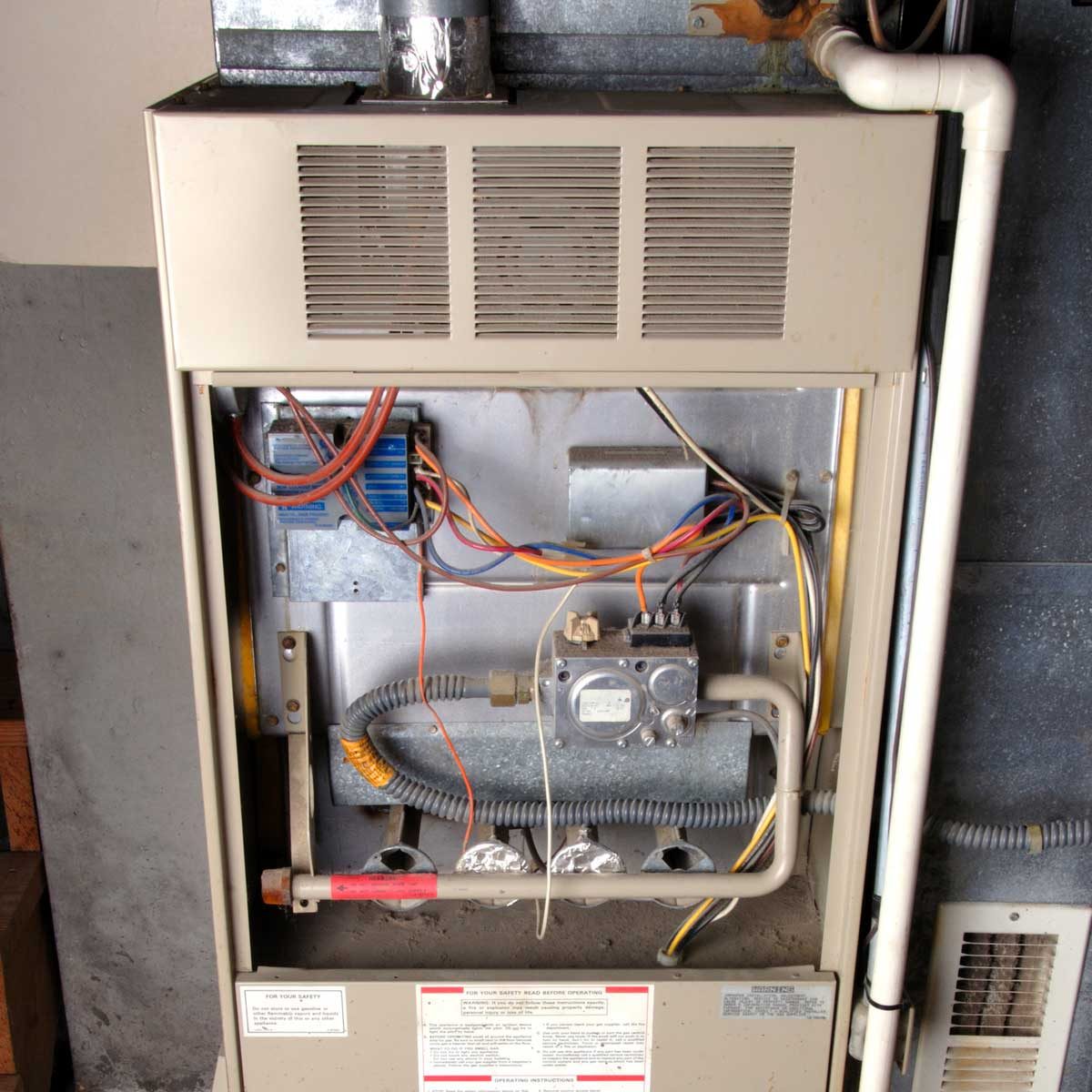Are you considering buying a gas furnace? We can help you make an informed decision.

Gas Furnace Buying Guide

Natural gas is one of the most economical sources of energy for home heating. That’s why, according to the Natural Gas Supply Association’s naturalgas.org, 62 million homes (56 percent of the U.S. total) have a natural gas furnace. It’s the most popular heating option, and has been for years.
Fun fact: The concept for the first gas furnace was created and patented in 1919 by Alice Parker of Morristown, N.J.
On This Page
What Is a Gas Furnace?
Gas furnaces burn natural gas or propane to heat air that’s distributed through ducts to various parts of a building. Natural gas and propane can also be used to heat water for hydronic heating, but appliances that heat water like this are called boilers not furnaces.
How Does a Gas Furnace Work?
Modern residential gas furnaces combine natural gas or propane with air, then burn this mixture internally to create heat. This heat energy is transferred to the air in the home via a heat exchanger that keeps exhaust gases out of living areas. A fan moves the heated air to various parts of the home through metal ducts. Additional ducts direct cool air back to the furnace for heating.
One or more thermostats in the home turn the furnace ON or OFF depending on the indoor temperature and the desired temperature set point.
Gas Furnace Considerations
Gas Furnace Replacement vs Repair
Age, repair costs and performance are the main things to consider. Furnaces are designed to work well for about 20 years. So for ease of calculation, assume the value of your furnace declines at a steady rate, ending up at $0 of value at the end of two decades of service. If a repair will cost more than 50 percent of the remaining value of your furnace, then replacement is a good idea. If the cost is less than 50 percent, do the repair.
For example, a furnace purchased 12 years ago for $6,000 would have a decline in value of $300 per year. With eight years left before hitting 20, the furnace is worth 8 x $300 = $2,400. If a repair will cost more than 50 percent of $2,400 ($1,200), then replace the furnace. If the repair cost is less than $1,200, then opt for the repair.
Amount of Gas Consumed By Your Furnace
Look at the physical quantity of gas consumed as recorded on previous bills, not the cost totals. If you’re burning more therms or cubic meters of gas over time, with no significant changes to your home or habits, then this decline in efficiency suggests replacing the furnace if it’s more than about 15 years old.
Gas Furnace Efficiency Level
This is one of the most important considerations, and efficiency can vary considerably from model to model. Standard-efficiency gas furnaces convert at least 80 percent of gas energy into heat delivered to your home, while today’s high-efficiency models convert at least 90 percent. Today’s top gas furnaces actually reach 98 percent efficiency.
How Heat Is Delivered by the Gas Furnace
- Single-stage models are the least expensive and are either OFF or putting out heat full-blast. There is no in-between.
- Two-stage gas furnaces are different. They can operate at low or high settings, depending on how much heat your home requires.
- Modulating gas furnaces are the third and most expensive type. They can produce more or less heat in fine increments depending on how cold it is outside, how far the set point is from the current room temperature, and how quickly the room is heating up. All else being equal, modulating gas furnaces are more efficient than two-stage, and much more efficient than single-stage. Modulating or two-stage designs also boost comfort by providing a more even supply of heat to your home.
How Much Does a Gas Furnace Cost?
A gas furnace costs between $3,000 and $12,000 installed, depending on size, quality and the complexity of the installation. Around $6,000 is an average price for a new gas furnace installed.
Operating costs for natural gas furnaces vary tremendously depending on the climate, the home’s size and insulation, the desired room temperature and the market price of natural gas. In some regions, total heating costs might be $500 for an entire year. In colder regions with a leaky old house, it might be 10 times that.
While considering operating costs, don’t assume natural gas prices will be the same as propane. Although both are combustible gases used for heating, propane is generally much more expensive for a given amount of heat than natural gas. That’s because propane needs to be delivered by truck to each residence, while natural gas flows efficiently from the source to the consumer. And in some rural areas where there’s insufficient competition in the propane market, propane prices can rise unchecked.
How to Choose Between a Gas Furnace and the Other Options
If you have access to natural gas at your home, it’s likely the most economical option you’ve got, now and in the future. Occasionally, other home heating energy sources become cheaper than natural gas, but that’s not typically the case and not for long periods of time.
The issue is different with propane. Although propane is also a combustible gas, market prices for propane are almost always much higher than natural gas. If you don’t have access to natural gas, propane may not be the obvious choice. Consider an oil-burning furnace, electric furnace or wood heat as an alternative to propane where natural gas is not available.



















